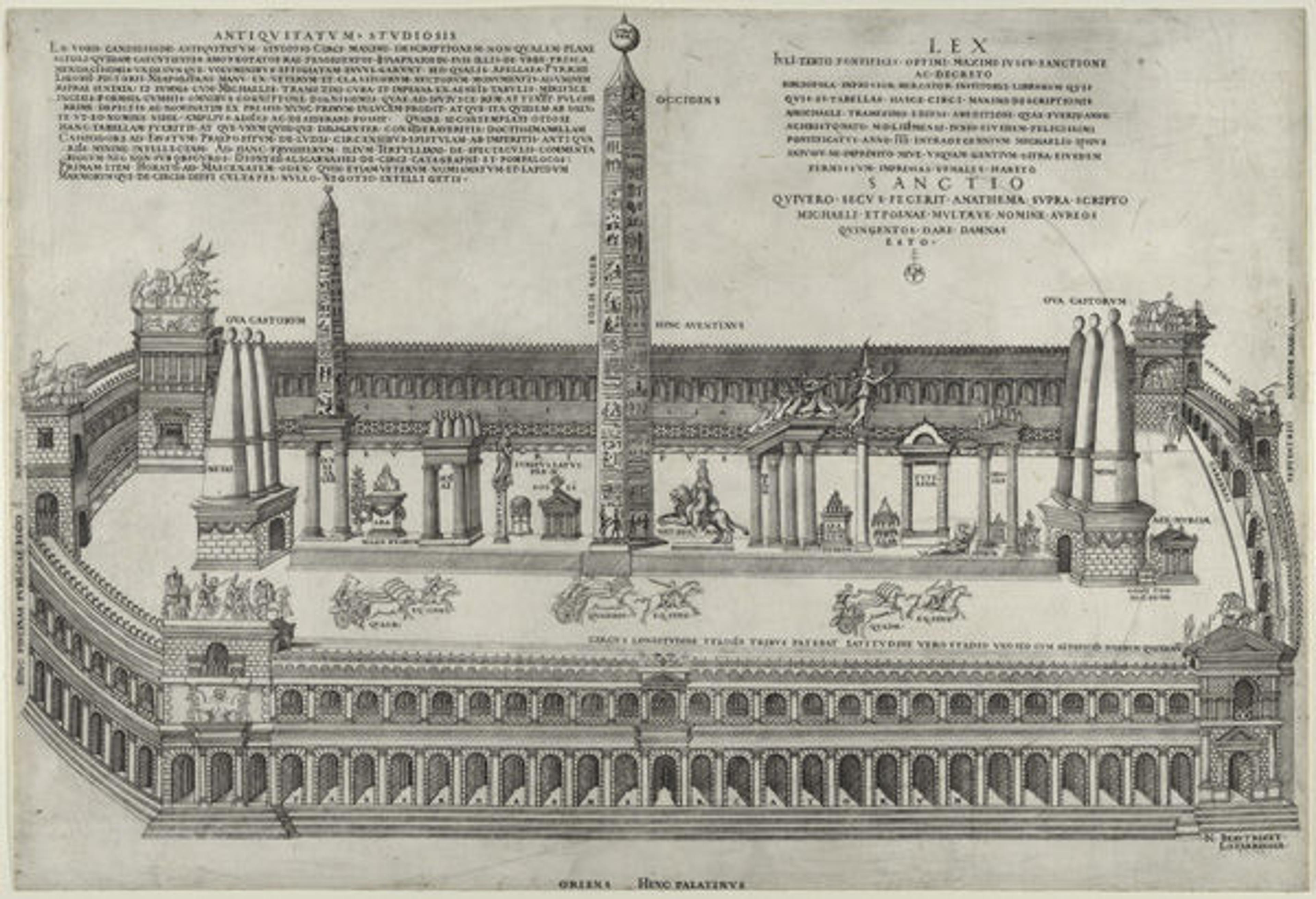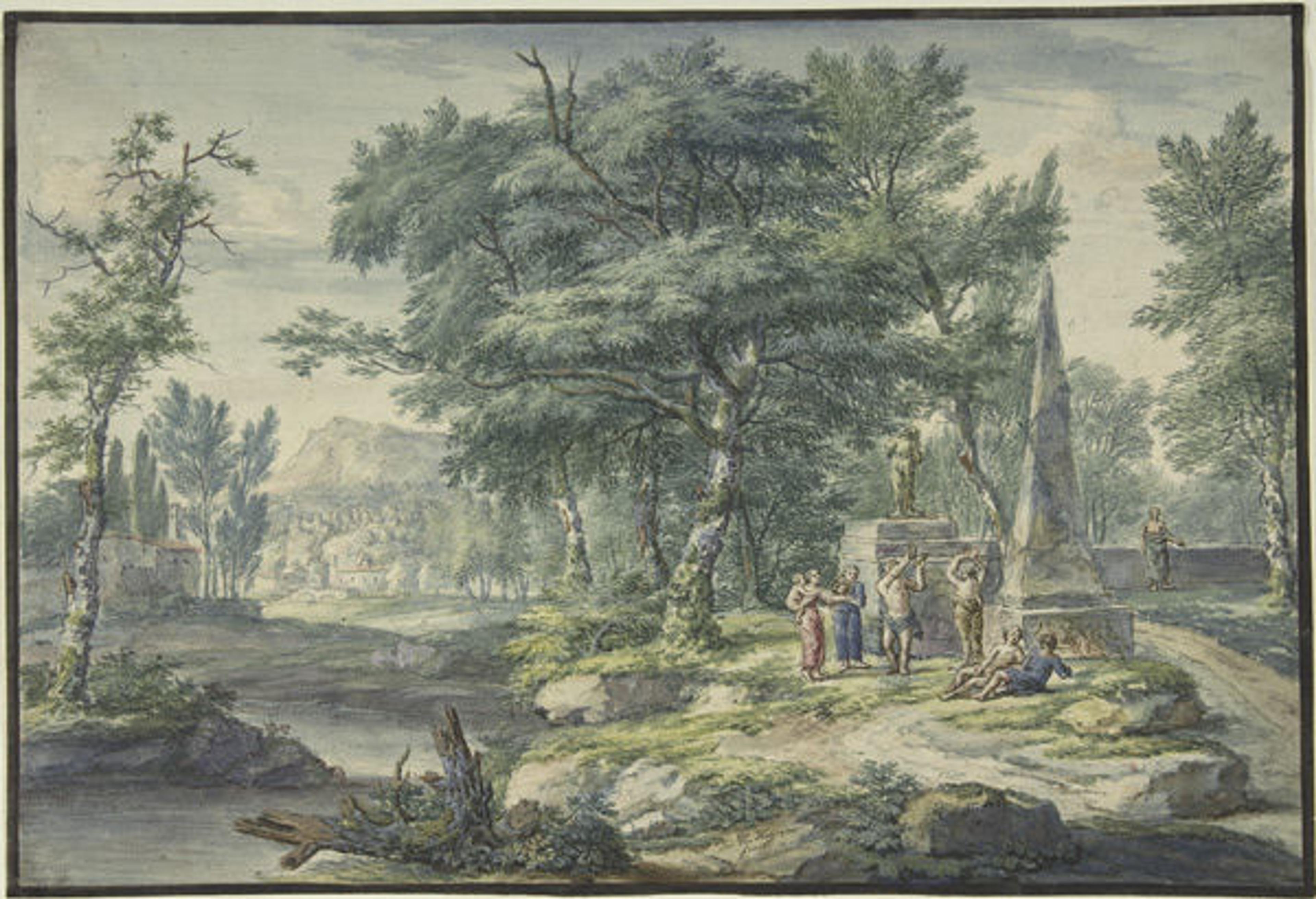
Nicolas Beatrizet (French, 1515–ca. 1566). After Pirro Ligorio (Italian, ca. 1512/13–1583). Speculum Romanae Magnificentiae: Circus Maximus, 1553. Engraving; first state of three. The Metropolitan Museum of Art, New York, Harris Brisbane Dick Fund, 1941 (41.72[1.67])
«Coinciding with the conservation treatment of the obelisk of Thutmose III in Central Park, the current exhibition Cleopatra's Needle focuses on this important Egyptian icon. Through various works of art from the Museum's encyclopedic collection, as well as some important loans from other institutions and private collectors, the show explores the meanings, functions, and manifestations of obelisks, both in their original context in ancient Egypt and later adaptations in western culture.»
The exhibition, on view through June 8, features several works on paper from the collections of the Department of Drawings and Prints. Among others, it includes prints from the sixteenth-century Speculum Romanae Magnificentiae (The Mirror of Roman Magnificance) showing reconstructions of the Circus Maximus and Flaminius in Rome. The large-scale illustration of the transport and installation of the so-called Vatican Obelisk, commissioned by Pope Sixtus V in 1586, is another telling illustration of the importance given to this type of monument in early-modern Italy. Other scenes and designs show the adoption of obelisks in monumental funerary monuments, as focal points in the early-modern cityscape or picturesque elements in landscape capriccios.

Jan van Huysum (Dutch, 1682–1749). Arcadian Landscape with Figures Making Music, early 18th century. Pen and grey ink and watercolor; broad framing line in black ink. The Metropolitan Museum of Art, New York, Van Day Truex Fund, 2008 (2008.476)
Due to the fragile nature of works on paper, which are generally on view for a maximum of three to four months at a time to avoid overexposure to light, the drawings and prints in Cleopatra's Needle will be rotated. As of today, a second group of drawings and prints, which includes works by well-known artists such as Giovanni Battista Piranesi and Rembrandt van Rijn, will provide the exhibition with a fresh look and new insights.

Rembrandt (Rembrandt van Rijn) (Dutch, 1606–1669). Landscape with an Obelisk, ca. 1650. Etching and drypoint; second state of two. The Metropolitan Museum of Art, New York, H. O. Havemeyer Collection, Bequest of Mrs. H. O. Havemeyer, 1929 (29.107.5)